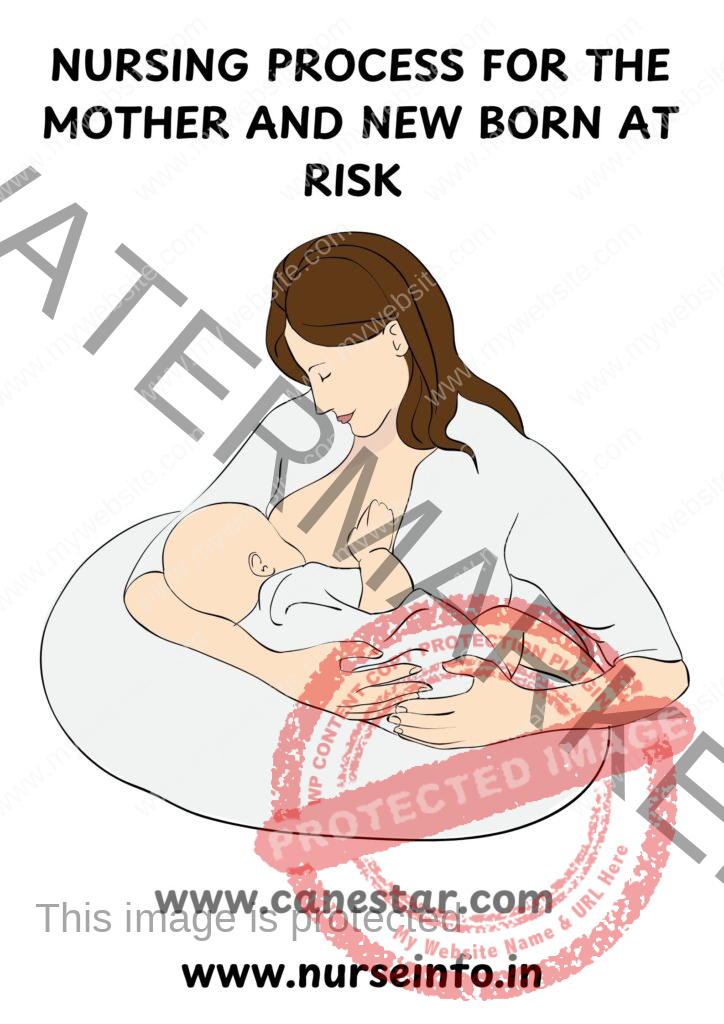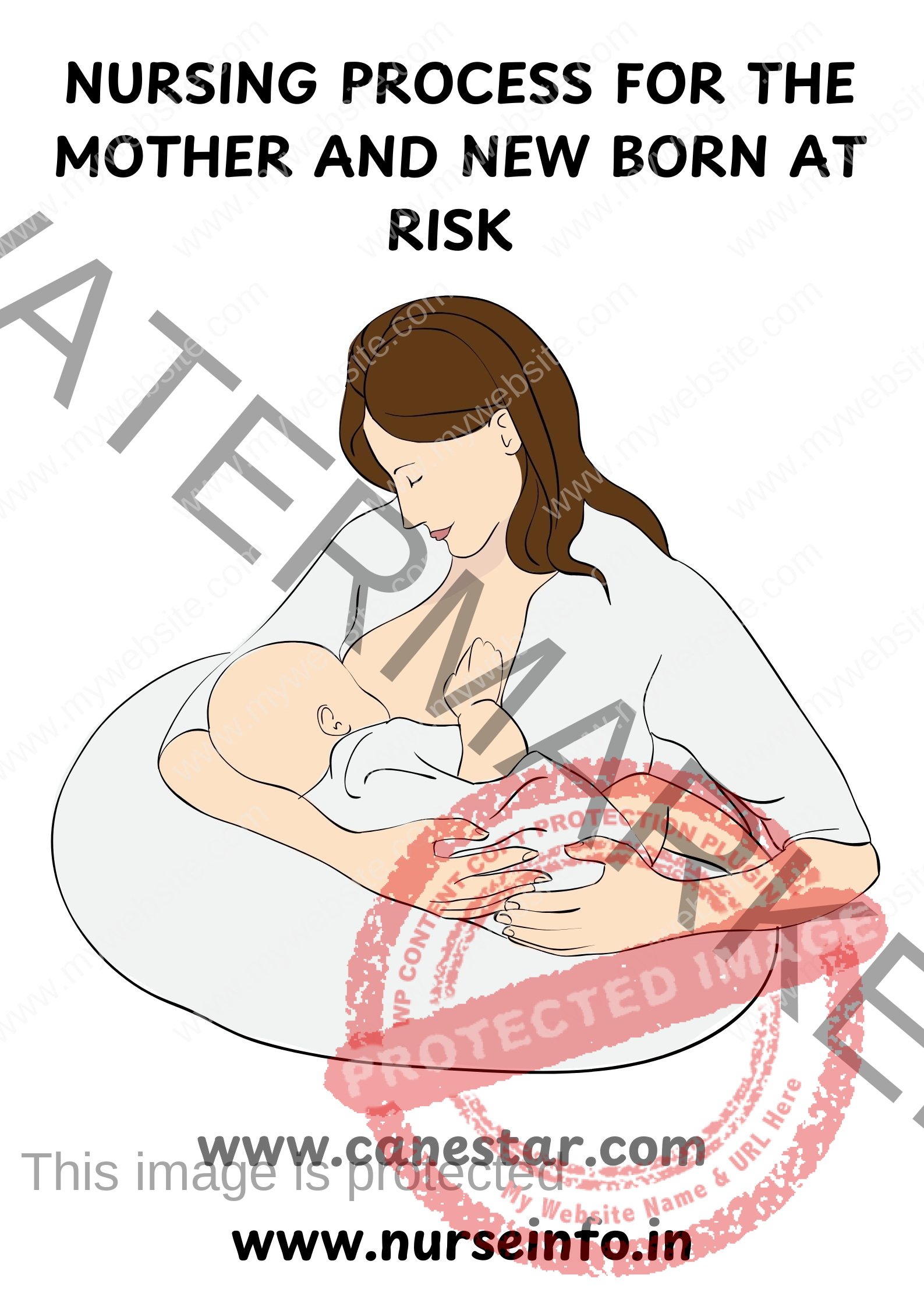NURSING PROCESS FOR THE MOTHER AND NEW BORN AT RISK
NURSING PROCESS FOR THE MOTHER AND NEW BORN AT RISK
The nursing process for the mother and newborn at risk involves five steps: assessment, diagnosis, planning, implementation, and evaluation. This approach ensures comprehensive and individualized care for both mother and baby. Here’s a breakdown of the process:

1. Assessment
- Mother:
- History and Physical Examination: Collect maternal history (e.g., preeclampsia, diabetes, infection, preterm labor).
- Vital Signs Monitoring: Check blood pressure, temperature, pulse, and respiratory rate.
- Lab Results: Review glucose levels, urine analysis, and blood tests for signs of infection or other complications.
- Emotional and Psychological Status: Assess the mother’s mental health, emotional support, and coping abilities.
- Newborn:
- APGAR Score: Assess at 1 and 5 minutes for heart rate, respiratory effort, muscle tone, reflexes, and skin color.
- Physical Exam: Check for birth injuries, congenital anomalies, jaundice, or respiratory distress.
- Feeding and Weight: Monitor breastfeeding/formula intake and weight gain/loss.
- Vital Signs: Monitor body temperature, respiratory rate, and heart rate.
2. Nursing Diagnosis
- Mother:
- Risk for infection related to cesarean section, preterm rupture of membranes, or postpartum hemorrhage.
- Risk for ineffective breastfeeding due to poor latch, nipple pain, or maternal fatigue.
- Risk for impaired coping due to stress, unexpected complications, or neonatal admission to NICU.
- Newborn:
- Risk for hypothermia related to low birth weight or preterm birth.
- Risk for impaired gas exchange related to respiratory distress syndrome.
- Risk for infection due to immature immune system or maternal infection (e.g., Group B Streptococcus).
3. Planning
- Mother:
- Prevent infection and promote healing by ensuring proper hygiene and monitoring for signs of infection.
- Support breastfeeding by providing lactation consultation and education.
- Implement emotional support strategies for maternal anxiety or postpartum depression.
- Newborn:
- Maintain thermoregulation with skin-to-skin contact, warm blankets, or an incubator.
- Monitor and manage respiratory status, administering oxygen if needed.
- Prevent infection with sterile handling and proper neonatal care practices.
4. Implementation
- Mother:
- Administer prescribed antibiotics or medications for infection or bleeding management.
- Provide breastfeeding education and assist with positioning and latch.
- Facilitate bonding with the newborn and offer emotional support and counseling.
- Newborn:
- Perform routine newborn care, such as cord care, feeding assistance, and bathing.
- Administer medications like vitamin K and hepatitis B vaccines.
- Monitor oxygen levels and apply respiratory support as required.
5. Evaluation
- Mother:
- Evaluate the mother’s wound healing, infection signs, and overall recovery.
- Assess successful breastfeeding and infant nutrition intake.
- Review maternal emotional well-being and support postpartum mental health needs.
- Newborn:
- Monitor weight gain, feeding patterns, and vital signs.
- Reassess the newborn’s ability to maintain body temperature.
- Ensure the newborn is free from respiratory distress or signs of infection.
The goal is to ensure the safety and health of the mother and the newborn, addressing complications and promoting bonding and recovery.

